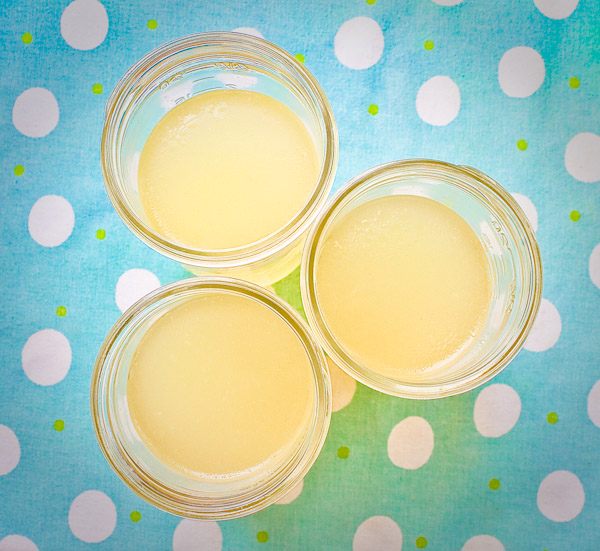 One year and three days ago, at 3:30 in the afternoon on 11/11/11, I was eating lentil soup. I am able to tell you exactly that, as it was the meal I finished just as my water broke for the birth of my son. Truthfully, it was lentil soup followed by a scoop of my husband’s homemade vanilla bean ice cream, topped with a generous drizzle of David Lebovitz’s perfect hot fudge recipe Standing at the edge of the new parent cliff, really having no idea what the next many weeks would hold for us, I had been furiously putting meals away for days and days. I don’t know what I expected, but my level of anxiety was fairly appropriate. And when I get anxious, I cook. When someone is struggling, I cook. When things seem grim and I have no idea what to do, out come the cookbooks. And so for the very expectant weeks prior, I had been cooking and cooking. Our chest freezer in the basement was a culinary tetris, packed tightly with calories to keep us going in the 3ams of the coming weeks. Quart container after quart container of warming stews, gumbos, and soups were obsessively stacked alongside a half dozen bags containing fifty frozen dumplings each, devotedly hauled home from Chinatown in the city. I may have been facing a month without leaving the house or having both hands free at once, but I was not going down on an empty stomach. I didn’t know who I’d be on the other side of all of this, but I knew I’d still demand great food. Lentil soup has been a comfort food staple for me through most of the very varied episodes of my life. Cheap, simple, high in protein, and even vegetarian—for that twenty-year phase I went through—its sum is definitely more than its parts. And this will always be the last thing I cooked as a person who wasn’t someone’s mom. As soon as it gets dark before quitting time and a tiny chill shimmies under the door, I crave this recipe. And eating it again this year, days before I became a person who is the mom of a one year old, I am brought right back to a year ago, or my lunch break room in graduate school, or the kitchen in my first apartment in New York, and also my tiny dark brown dorm fridge. I look at the photo we snapped just before walking out the door to drive to the hospital, and am astounded by how I feel like I don’t even know those people. But it is indeed me, as is the girl hosting her first dinner party in a studio apartment, or the girl with the giant mug in her window seat in college, all recognizing each other by the smells and tastes of the recipes that make up my life’s cookbook. Happy first birthday darling boy.
| ||||||||||||||||||||||
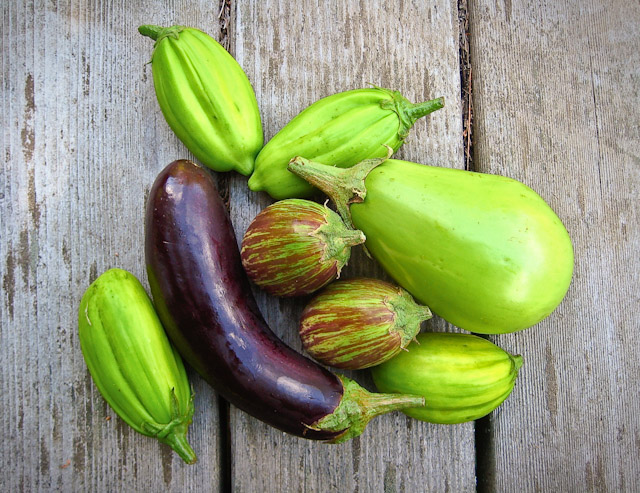 By this point in the summer I definitely get into a rut and prepare fruit and vegetables from the gardens and market in almost the same ways daily. Not that that is a bad thing, as with produce this amazing, at the height of their season, there is often very little that can improve upon them. A little grilling here, a little lightly dressed salad there, a little sautéing tossed with fresh pasta over there… Vegetable and fruit roasting feels like almost too basic a technique to even justify a whole blog post. However, several times during the year I have these ah-ha moments where I am bored with what I have been cooking and then suddenly remember to mix things up I just need to roast, which I somehow forget about for spells at a time. The long exposure to dry heat and the contact with the surface of a baking sheet or roasting pan transforms produce in ways very different than grilling, steaming or sautéing. Most importantly it evaporates much of the water in the fruit or vegetable, drying it out some (Take that watery zucchini!), and deeply concentrating the flesh and the flavor. Also the edges of the produce start to get brown and sweet and caramelized and utterly irresistible after the natural sugars are exposed to heat and the surface of the baking dish. (more…) | ||||||||||||||||
 Sweet, elegant, rosy, and full of the ocean, homemade lobster stock grabs my attention like little else. Having a few quarts of this on hand in my freezer has allowed me, on more than one occasion, to pull a seafood risotto out of thin air for unexpected dinner guests. I'll repeat that--pull seafood risotto out of thin air. Like last week's tutorial on making chicken stock, I think it is incredibly important to make a point to use every part of an animal and take nothing for granted. Particularly with pricy lobsters, not wasting any of their precious flavor or nutrients seems paramount. The shells and body have loads of luscious lobster essence, and tossing that out feels criminal. (more…) | ||||||||||||||||
Of all of the amazing things I learned in culinary school, by far the most valuable was how to make great stock. I clearly remember the lightbulb moment when it was demonstrated to us. I clearly remember rushing home that weekend with a bag of carrots, celery, and onions, dying to practice it on my own, and proudly showing my husband my new skill. At this point it is totally ingrained in our weekly life. We whip up a pot of stock almost without thinking, whenever we have extra bones or the reserve in the freezer is getting low. Daily we use lovely homemade stock in all areas of cooking, sometimes where you would just add water, adding a huge boost of flavor and protein. It is such a joy to have it always on hand, know exactly what is in it, and have such a superior ingredient. I can't even smell store-bought broth in a can anymore. There. Is. No. Comparison. I also really value that we are using every bit of the animal, right down to its bones, neck and feet. There is incredible flavor and protein in there. But also if that animal is going to die for me to eat it, and I am certainly not going to take that for granted and be wasteful. Do yourself a giant favor and have a few quarts of this on deck in your freezer. Use it to cook rice and grains, reduce it for sauces, throw in shredded vegetables and thin noodles for a quick soup, and hundreds of other applications. I also love sipping a mugful for a mid-afternoon snack.
| ||||||||||||||||||||||
It was announced yesterday that Mark Bittman's weekly column in the New York Times will end its thirteen year delicious, informative, enthusiastic, and encouraging run.
http://www.youtube.com/watch?v=kqChHSsf42c I have learned many lessons from Mr. Bittman's column. Starting in 1997, a year after I graduated from college, I cooked recipe after recipe from his writing and suggestions and road maps of seasonal dishes. His overarching philosophy of don't be intimidated, just get in the kitchen and make good, real food--"It's not rocket science"--is the cornerstone of what I deem most important in the work I do and what I am most trying to impart in this blog. His article The Well-Dressed Salad Wears Only Homemade in 2006, not only instantly convinced me to remove all store-bought salad dressing from my life, but also started my path of questioning any and all store bought food-stuffs. He sent my husband and I on a scavenger hunt through winding cobblestoned back streets of Genoa, Italy, and putting Genoa on our itinerary at all, because of his completely intriguing description of the hole-in-the wall greasy spoon, Trattoria Maria, as "one of my favorite restaurants in the world." It ended up being our favorite city of the trip---the trip on which we got engaged. His coverage of Jim Lahey's no-knead bread technique, sent me, and throngs of other eager cooks, out in search of hearty lidded cast iron cookware (according to the sales person at the Le Creuset outlet in Woodbury Commons: "Are you here because of The Bread?"), and got the country excited about making homemade bread. I encourage you to go back over his fun, relaxed and heartfelt collection of pieces, and cookbooks (How to Cook Everything, 2,000 Simple Recipes for Great Food Thank you, Mr. Bittman. Looking forward to what's next on the menu. A few of my favorites from the past years, that I return to again and again: Soto Ayam--Indonesian Chicken Soup with Noodles and Aromatics Chard Stuffed with Lemon Saffron Risotto and Mozzarella Chicken Biriyani 101 Simple Salads for the Season 101 Simple Appetizers in 20 Minutes or Less Almond-Apricot Granola Bars | ||||||||||||||||
 After the 3+ feet of snow we had this past week, I find it impossible to believe that I am watching even more flurries outside today. The blizzard this week caused the farmers, whose work ethic is only outdone by their good sense, to not come to NYC for the greenmarket this Friday. Union Square, though stunning all decked out in white, was empty. Fortunately last week I bought a lot of long-keeping root vegetables. Perfect tools for a shut-in day upstate, with no takeout around for miles.  WINTER CHICKEN “NOODLE” SOUP WITH DILL PARMESAN CRISPS By Catie Serves 4 For the Soup: 2 quarts Chicken Stock 1 medium Celeriac, about 6 oz, peeled and shredded or sliced thin 2 medium Parsnips, about 6 oz, peeled and shredded or sliced thin 3-4 Carrots, about 6 oz, peeled and shredded or sliced thin salt to taste For the Crisps: 1 packed cup Parmesan Cheese, grated 1 tsp Fresh Dill, finely chopped (I used dill I had frozen from our garden this summer) For the Crisps: Preheat oven to 350° F. Thoroughly mix grated parmesan and fresh dill together in a small bowl. Make small mounds (about 2 TBS each) of the cheese mixture evenly spaced on a silpat mat on a sheet pan. Gently flatten each mound into a disc shape—the cheese won’t spread much beyond where you place it. You should have about 6 discs. 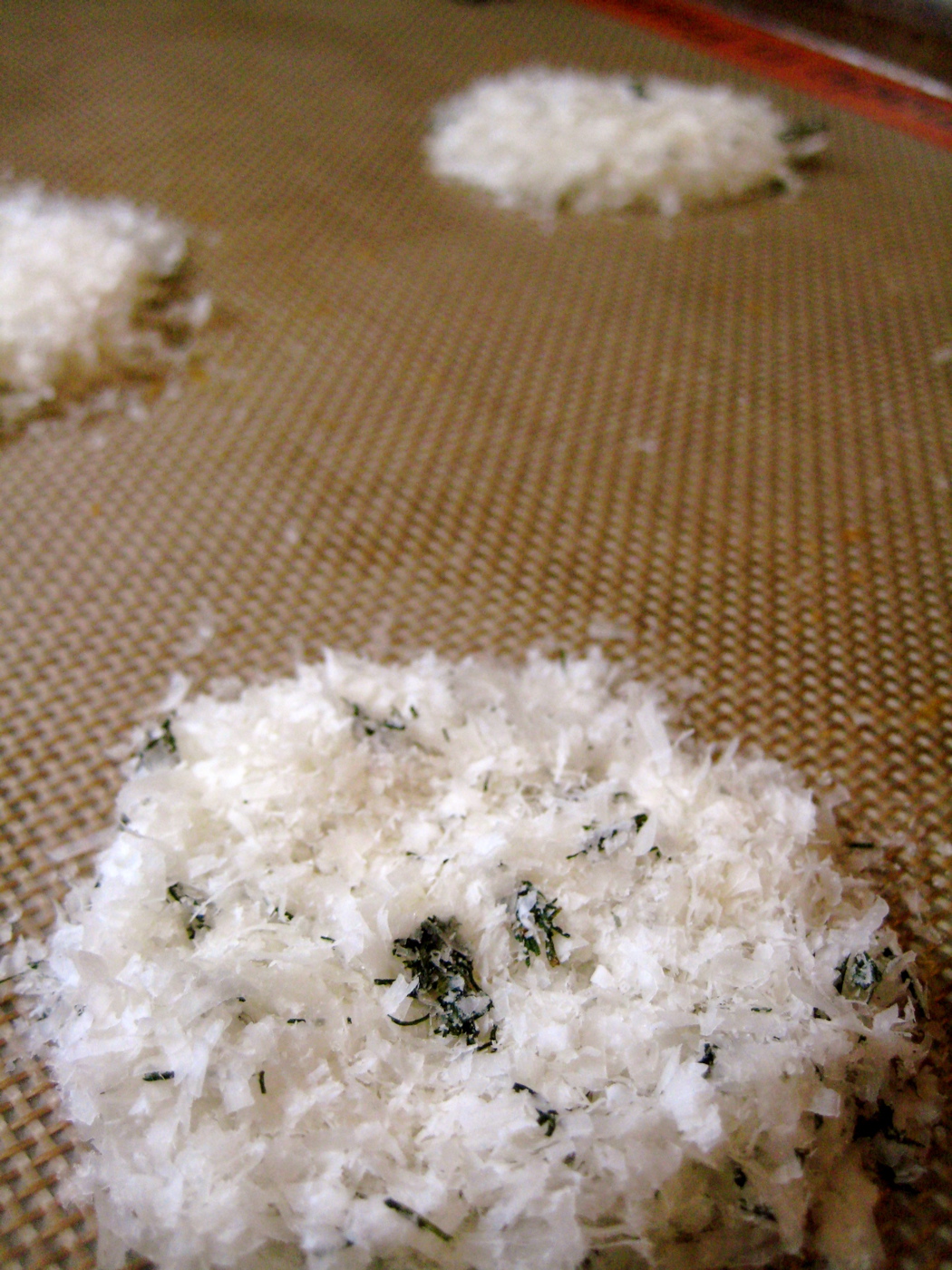 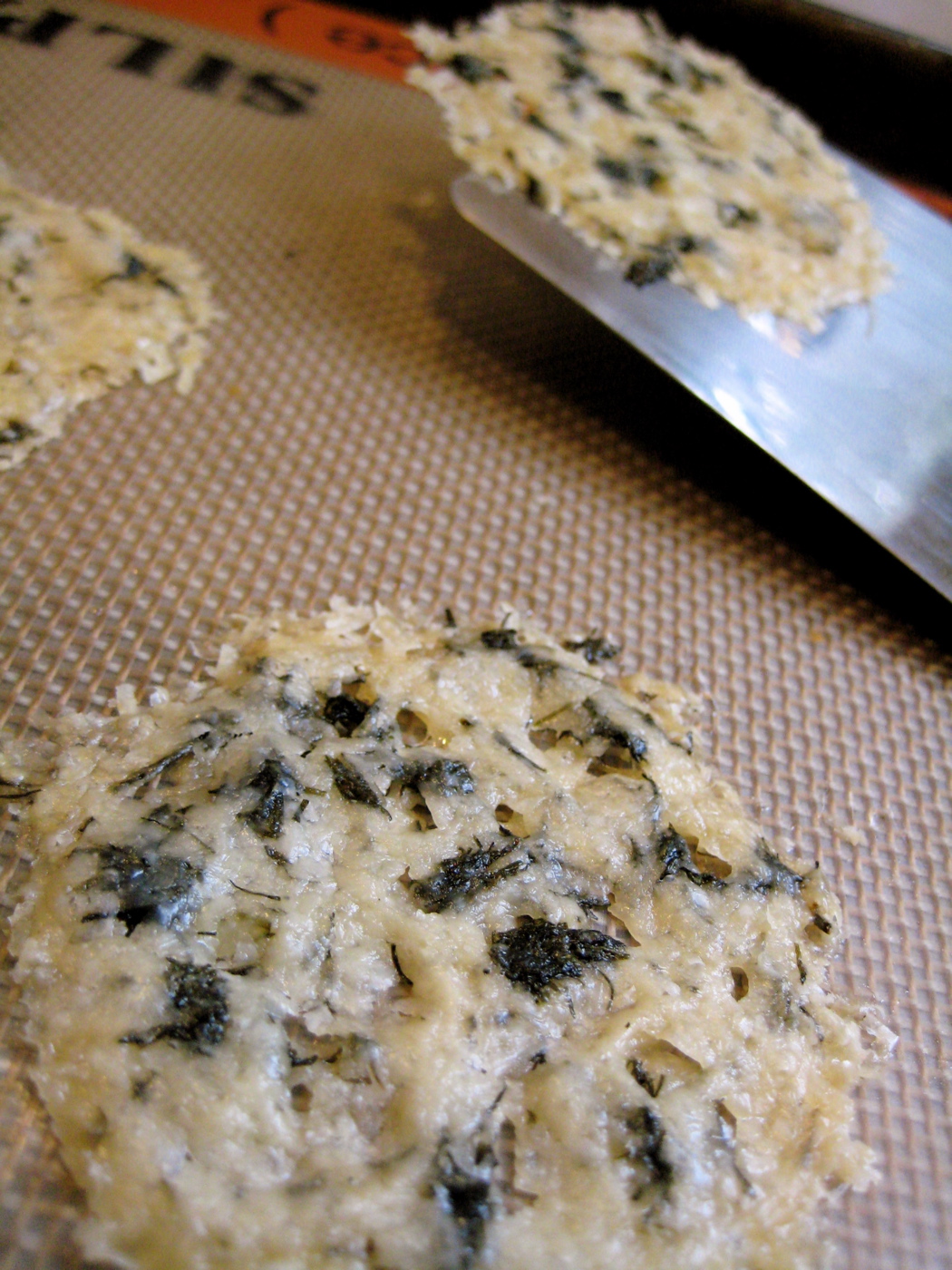 Bake at 350° F for about 8 minutes—just until the melted cheese has reached the center of the discs, and the edges are just starting to turn golden. Don’t over cook, or they tend to get bitter. Let the crisps cool on the silpat. Gently remove with a thin spatula. For the Soup: 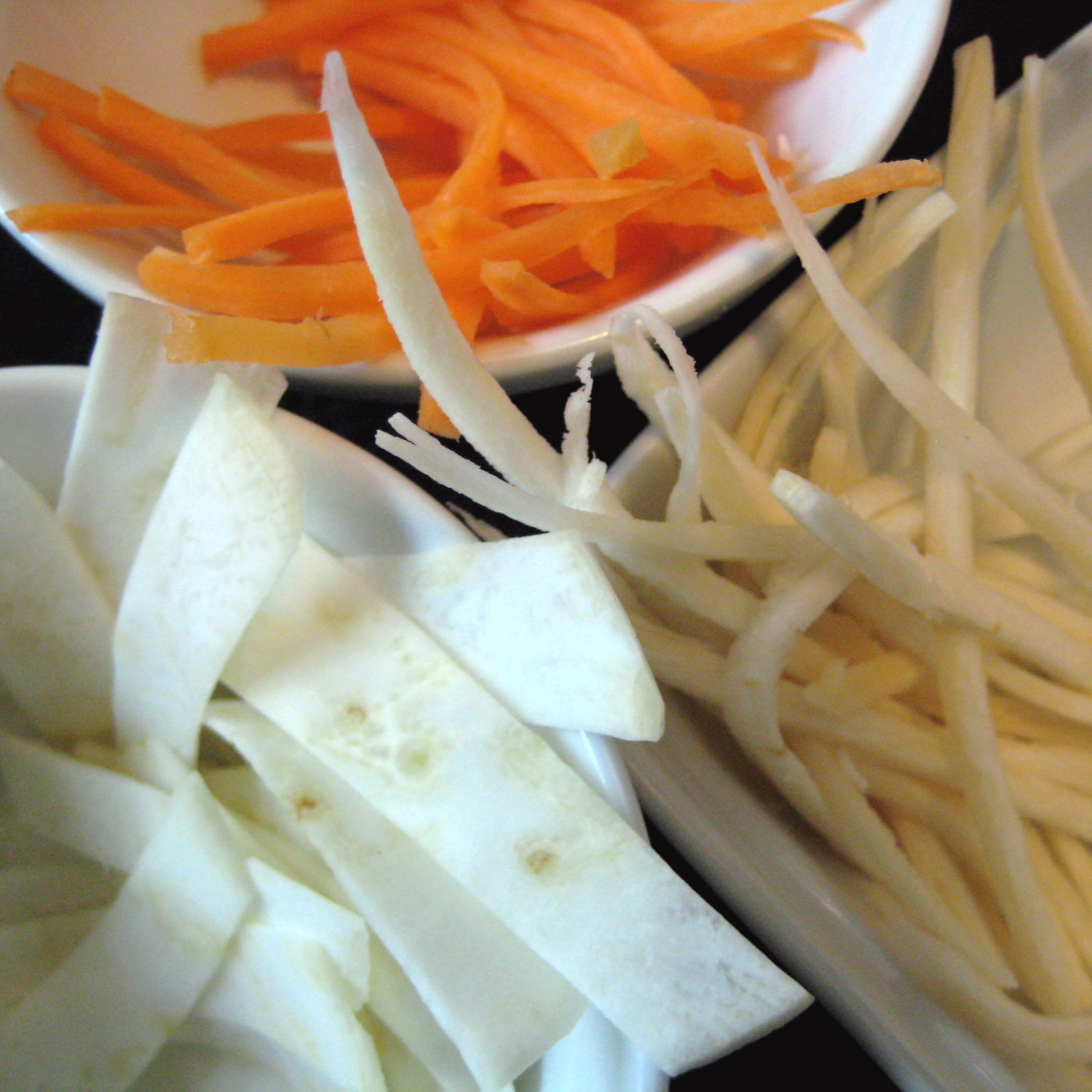 The vegetables can be cut in a variety of ways. The easiest is shredding them all in the food processor with the large grating blade. However, you can also use a mandoline for long thin strips, julienne them by hand, or (as I did with the celeriac this time) thinly slice with a vegetable peeler—which ended up looking the most like noodles. It is pretty to slice them in a few different ways, particularly if you have two vegetables that are the same color. The vegetables can be cut in a variety of ways. The easiest is shredding them all in the food processor with the large grating blade. However, you can also use a mandoline for long thin strips, julienne them by hand, or (as I did with the celeriac this time) thinly slice with a vegetable peeler—which ended up looking the most like noodles. It is pretty to slice them in a few different ways, particularly if you have two vegetables that are the same color.(The most important thing is to make sure that all the vegetables are relatively similar in thickness once they are cut, so they cook evenly. You can certainly stagger putting them into the pot if you have larger cuts, so they can all be finished at the same time.) Heat the chicken stock over medium heat to a gentle boil. Add the shredded vegetables. Bring the stock back to a boil, and reduce to a simmer until the vegetables are al dente—about 4 minutes total. Season with salt to taste. Portion into four bowls, and mound vegetables slightly in the center. Top with a Dill Parmesan Crisp. 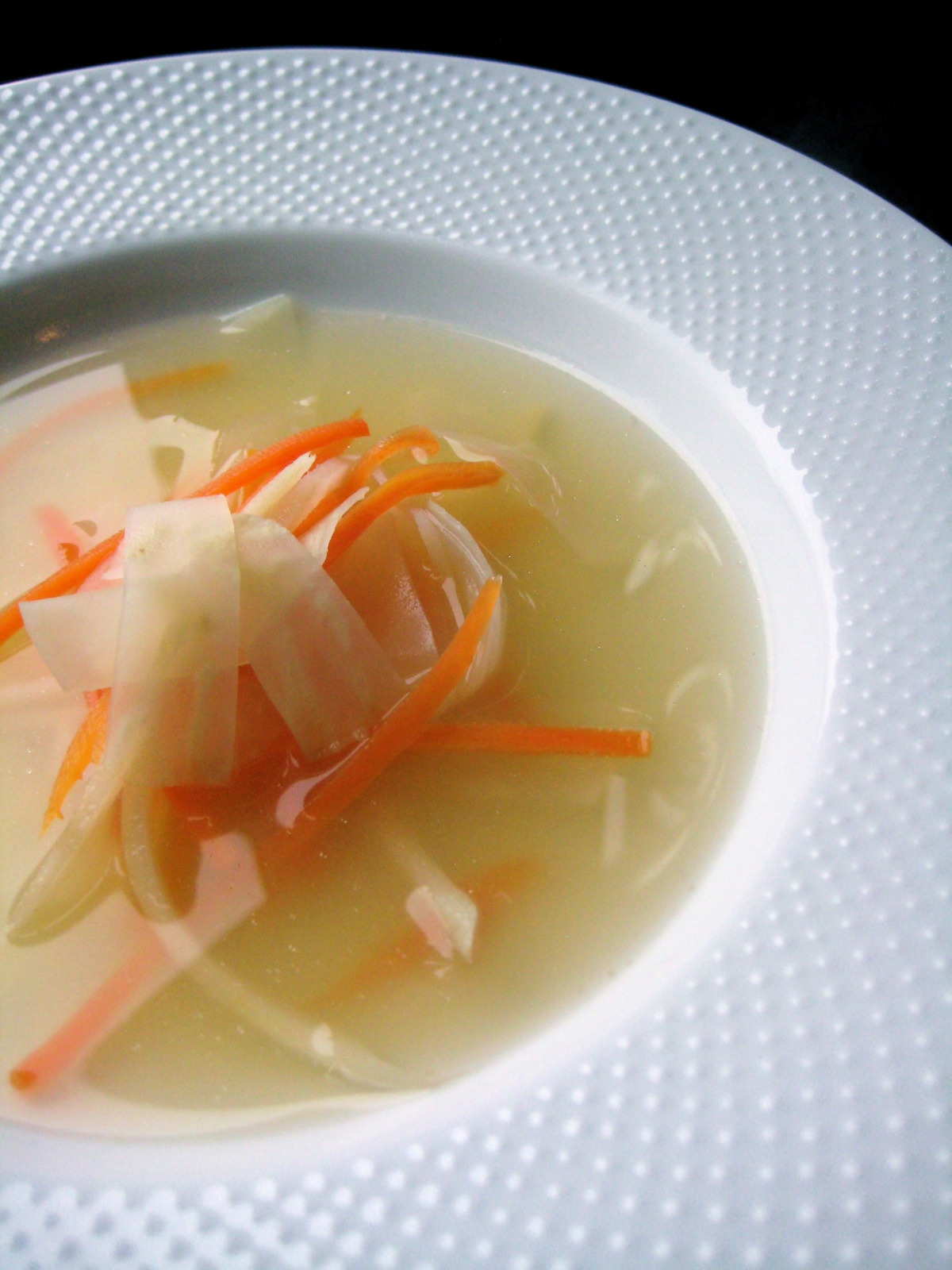 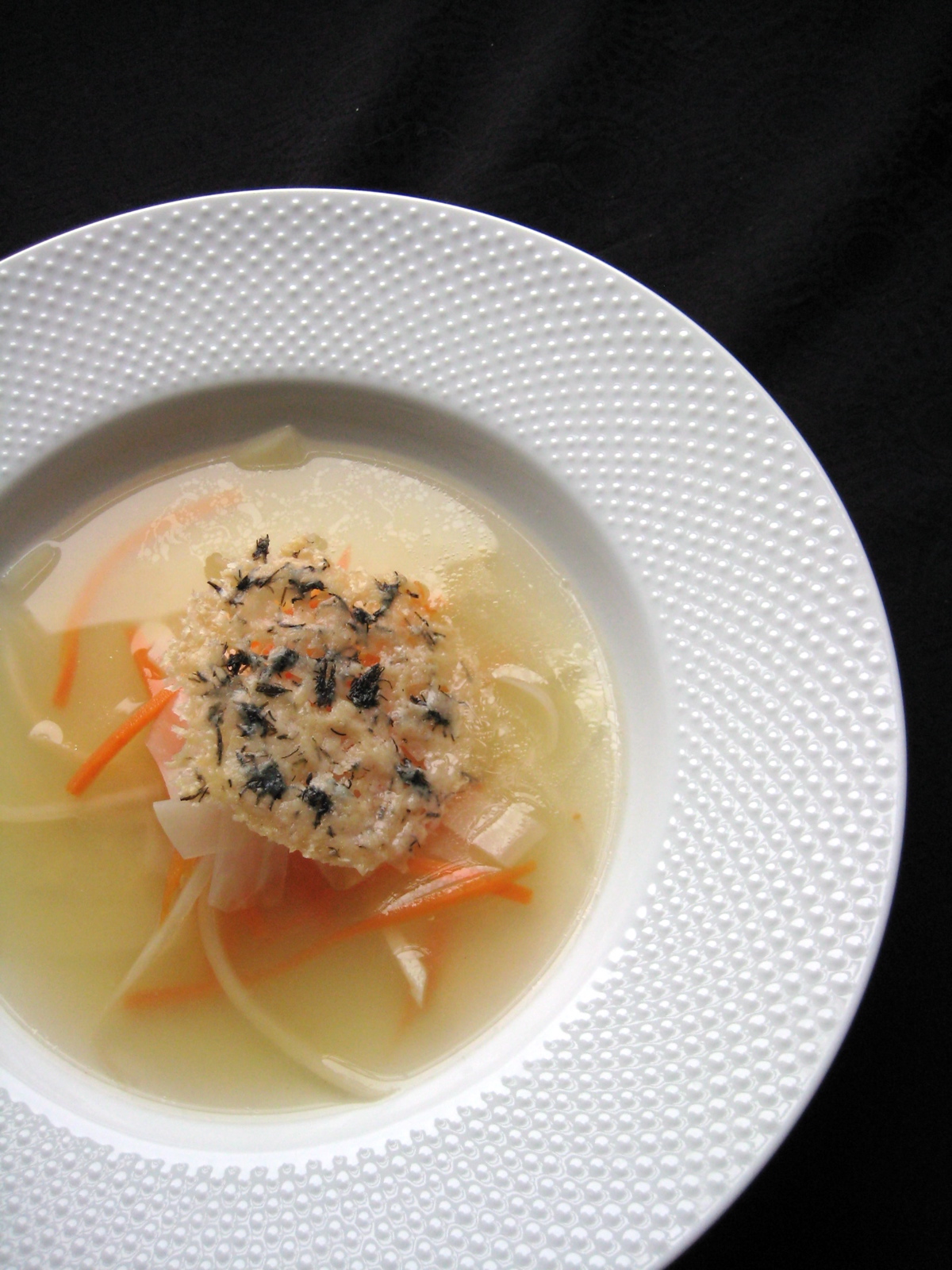 | ||||||||||||||||
|
{ welcome! }
 Catie Baumer Schwalb is a chef, food writer and photographer, who splits her life between the city and the country. Not too long ago Catie was a New York City based actress and playwright for more than a decade. She has her Master of Fine Arts from the National Theater Conservatory, and her Grand Diplôme in classic culinary arts from the French Culinary Institute in New York City.
... Read More ≫
Catie Baumer Schwalb is a chef, food writer and photographer, who splits her life between the city and the country. Not too long ago Catie was a New York City based actress and playwright for more than a decade. She has her Master of Fine Arts from the National Theater Conservatory, and her Grand Diplôme in classic culinary arts from the French Culinary Institute in New York City.
... Read More ≫{ get in touch }
{ what's new }
September 12, 2015
August 19, 2013
August 15, 2013
August 13, 2013
August 1, 2013
{ favorites }
{ archives }
Appetizers / Breads & Pastry / Breakfast / Cakes / Canning / Condiments / Dinner / DIY foods / Drinks / Fall / favorites / Grains / Holidays / Local / Noodles & Pasta / Pies & Tarts / Poultry / Salads / Seafood / Snacks / Soup / Spring / Summer / Sweets / Techniques / Vegetables / Vegetarian / Winter /
{ currently reading }
|



